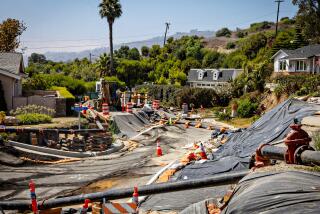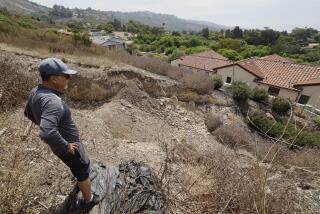Power Lines Pose No Cancer Risks, Expert Says : Health: Parents have urged school districts to test electromagnetic fields at schools next to high-tension wires.
ANAHEIM â Electromagnetic fields created by high-tension power lines do not pose a health risk to nearby residents, according to a prominent scientist who has studied the subject.
The issue has been in county headlines recently, with Tustin residents fighting Southern California Edisonâs plan to build a substation there and Fountain Valley parents urging their school district to test electromagnetic fields at schools next to power lines.
âI have not found any convincing evidence that thereâs a problem,â said Dr. John C. Bailar, a recent recipient of a prestigious MacArthur Fellowship, faculty member of the McGill School of Medicine at Montreal, Canada, and consultant to the New England Journal of Medicine and the U.S. Public Health Serviceâs Office of Disease Prevention and Health Promotion.
âI think thereâs enough evidence to say itâs unlikely thereâs a health problem related to the power lines, and even if weâre wrong and there is a health problem, then itâs small,â said Bailar, who was in Anaheim on Tuesday to lead a discussion about radiation and health risks as part of the American Statistical Assn. convention.
Pointing to studies that link long-term electromagnetic field exposure with higher rates of some forms of cancer, a parent group in Fountain Valley has urged school district officials to hire an independent consultant to measure the fields. Measurements taken by Southern California Edison have differed greatly from those taken by the parent group.
âMeasurements often vary a great deal because the fields vary,â said Bailar, who organized a conference last year on electromagnetic fields. âA matter of several feet or even several inches could make a difference.â
Measuring the fields can be difficult, he added.
Fountain Valley Supt. Ruben Ingram has said he is not certain that he can justify taking money away from education programs to hire a consultant when there is no consensus on how to interpret and respond to the results of electromagnetic field measurements. School district officials are concerned but have been waiting to act until health officials provide advice about possible health risks.
While parents are frustrated by the districtâs position, Bailar said he thinks that the districtâs reaction is reasonable.
He said he does not see a need for taking more measurements other than for historical purposes on the off-chance that future studies reveal a link between the electromagnetic fields and health problems.
What is really needed, Bailar said, is a large study funded by government, power companies and concerned communities, with comment from all interested parties so all will accept the results.
âEven if there is no scientific problem, we now have a public policy problem, and it might be worth doing additional study to see whether these concerns are justified and to allay the fears of parents and others,â Bailar said.
He said the research, which he estimated would cost more than $1 million, should be a large-scale study of people exposed to various levels of electromagnetic fields over a long enough time span to determine the frequency of serious diseases.
More to Read
Sign up for Essential California
The most important California stories and recommendations in your inbox every morning.
You may occasionally receive promotional content from the Los Angeles Times.










